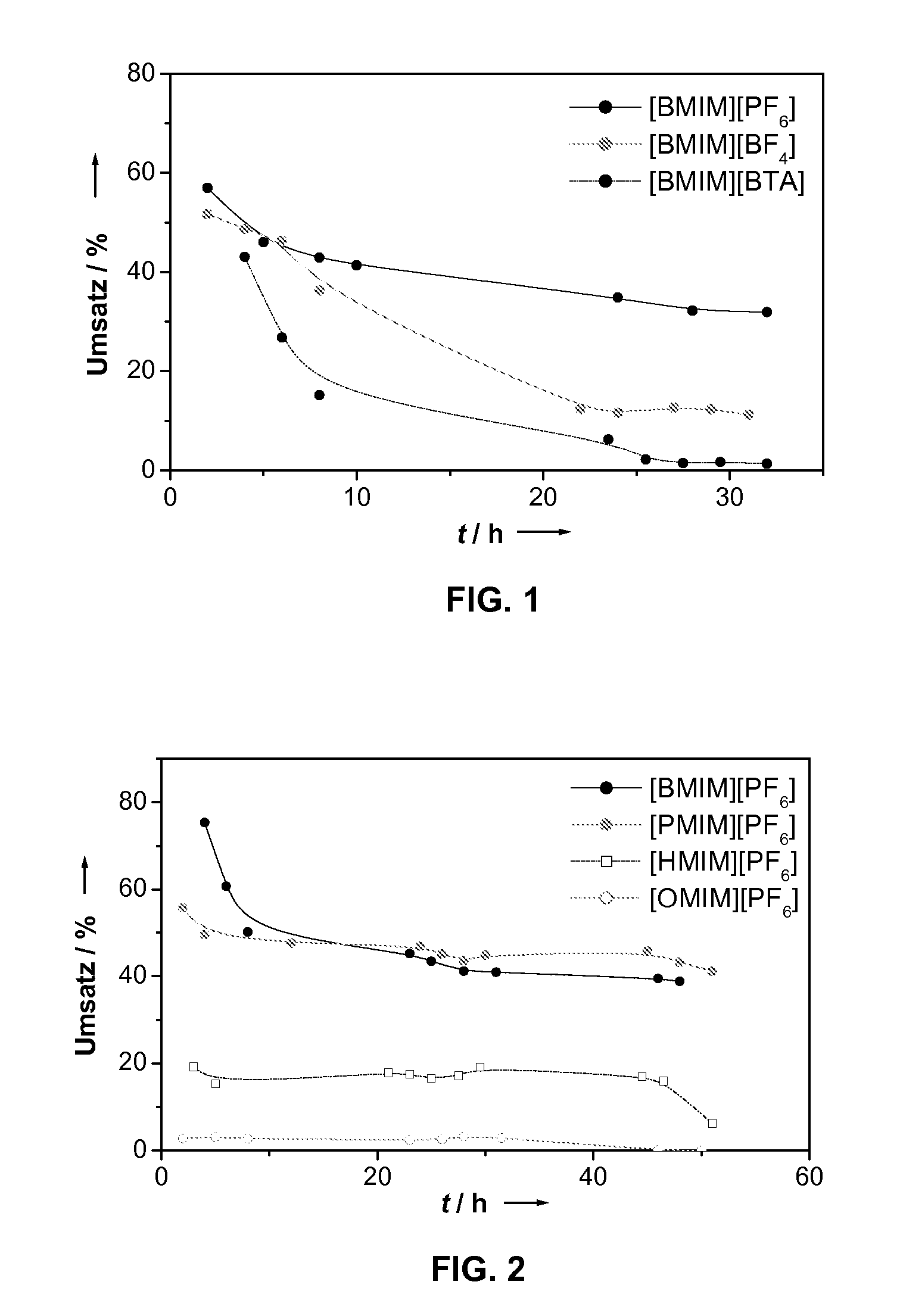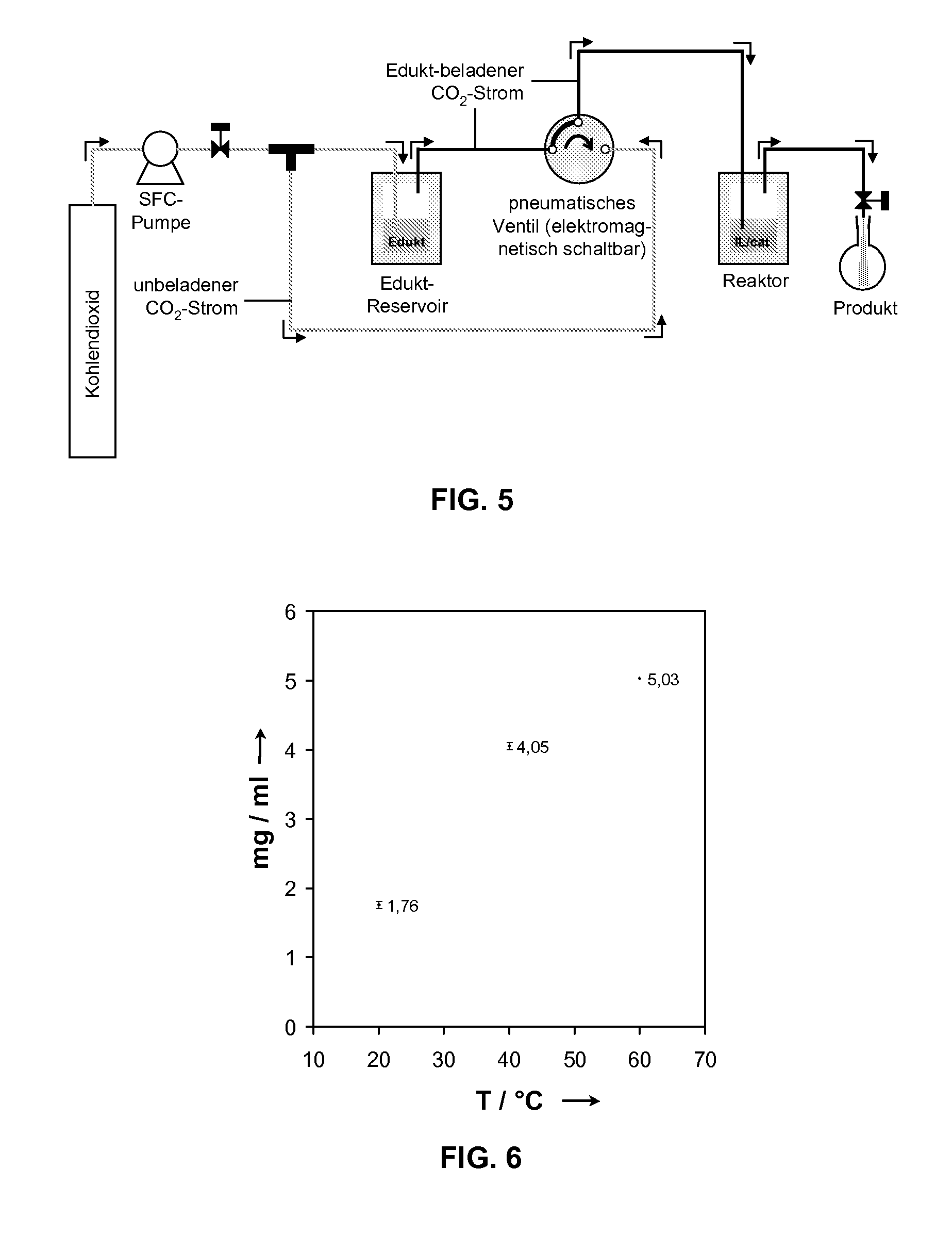However, the concentrations of the homogeneous catalysts used are typically in the one-digit
molar percentage range, which makes it essential to separate them efficiently from the product for economic and toxicological reasons.
However, this method is by no means generally applicable, as the chemical-physical properties of starting materials and corresponding target molecules are often very similar.
In addition, reactants which are liquid and
solid at ambient temperature—the aggregate states of nearly all fine chemicals—are far more difficult to react efficiently in multi-phase
catalysis, essentially because an additional
solvent has to be used.
The incorporation of another solvent phase, however, leads to a number of problems:1. The products have to be freed from the solvent, a process which generally exposes them to thermal loading, which often reduces the yield.2. It often proves very difficult to remove the last traces of solvent from the product, and this is a particular problem for pharmaceutical production lines.3. The widely used metathesis catalysts have insufficiently
selective distribution coefficients for conventional two-phase systems (liquid-liquid systems), with the result that there is undesirable leaching of catalyst into the substrate / product phase.
As a result of this extractive removal, not only is the activity of the catalytic
system reduced but there is also
contamination of the product with catalyst, which is unacceptable in many branches of fine
chemistry.4. Particularly the mobile solvent used for a continuous process must be extremely clean, as otherwise impurities from it build up in the catalytically
active phase, and in this way catalyst deactivation may be accelerated.
However, highly pure organic solvents are very expensive and hence uneconomical.
There is also the factor than in ring-closing metathesis of rings of
average size (8-11 ring members) and
large size (greater than or equal to 12 ring members) it is essential to work with very high dilutions so as to counteract reactions of oligomerisation.5. In view of their flammability and high volatility conventional solvents constitute an additional
potential risk.
When compressed
carbon dioxide is used on its own as the reaction medium, two properties in particular are problematic for the ring-closing olefin metathesis.1. On the one hand, the
supercritical carbon dioxide does not have good dissolving properties on the currently most active metathesis catalysts, with the result that the conversion rates are correspondingly low.
However, such catalysts are complicated to synthesise and are therefore very expensive.2. The
solubility of the currently most active metathesis catalysts under
reaction conditions which are suitable for efficiently reacting non-volatile substrates is still high enough to require separation of the catalyst from the product.
But this cannot be done without additional adjuvants in subsequent processes.
As a
limiting factor it must be stated, however, that the catalytic effectiveness of this concept is in no way characterised in the above-mentioned patent.
Apart from the use of highly volatile, combustible and in some cases toxic solvents for the extractive working up, however, there are also other disadvantages:1. In a fast
chemical reaction at the catalyst centre (which is dissolved in the
ionic liquid) the
mass transfer frequently limits the speed of the reaction as a whole.
This problem is generally considerably more serious than in reactions in the two-phase
system with two organic phases or one organic and one aqueous phase, as the relatively high
viscosity of the
ionic liquid leads to a low coefficient of
diffusion and relatively large droplets in the stirred
system.
Both these effects undesirably influence the
mass transfer of the educt to the catalyst centre.2. Ionic liquids are significantly more expensive than water and the majority of organic solvents.
Against this background, the greater or lesser cross-
solubility of ionic liquids in the organic educts and products is problematic, and is particularly serious when educts and products themselves have a certain polarity.
However, comparison tests carried out by these authors showed that in the presence of supercritical CO2, generally lower or, at best, equally high activities are found for the catalysts.
However, their method is restricted to systems in which there is at least one reactant which is gaseous under
normal conditions.
 Login to View More
Login to View More 


